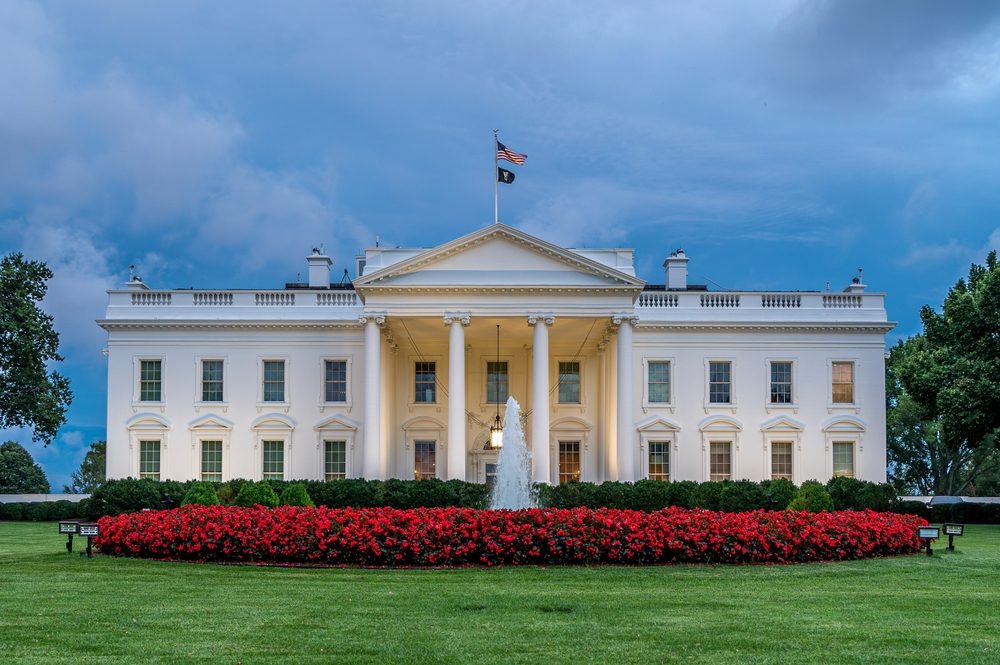Key points
- Donald Trump’s new US administration is expected to focus on extending tax cuts, implementing pro-growth policies, deregulation, and taking a tougher stance on China.
- The election outcome has led to a rally in risk assets, and Trump’s policies are likely to be supportive of US equities in the short term.
- However, the potential for a wider fiscal deficit, in combination with higher tariffs and immigration restrictions, could challenge the current consensus on disinflation and have consequences for economic volatility.
Donald Trump has secured victory in his third US presidential bid, and with it the popular vote. This outcome reinforces the anti-incumbent trend seen across the world, with voters expressing their discontent on issues such as inflation, immigration, and lack of trust with public institutions. Trump will re-enter the White House in an evolving geopolitical landscape, as countries grapple with continuing conflicts in Eastern Europe and the Middle East, as well as tensions in Asia.
In the early days of Trump’s second term, his administration is likely to begin taking steps to extend tax cuts, deliver business-friendly, pro-growth policies and deregulation, and take a tougher stance on China. He is also likely to pursue executive orders on tighter immigration policy, energy policy, and higher trade tariffs.
As the election outcome became increasingly apparent, risk assets rallied while the US dollar strengthened. There has been a wide consensus view that a Trump victory will be positive for financial markets. However, there are several other key factors to consider when assessing the longer-term outlook, which we consider here.
A boost for US equities?
Trump’s Republican Party has won the Senate and looks very likely to take control of the House of Representatives, though several House races are yet to be called. A Republican sweep would allow Trump’s administration to get to work implementing its full policy platform. Front and centre are tax cuts and deregulation, both of which should benefit the profitability and competitiveness of US producers. This should be positive for US equities, both in absolute and in relative terms, as it should be supportive for the US dollar. Additionally, Trump has promised to use tariffs to support US producers.
While Trump has proposed to extend his 2017 tax cuts on individual incomes, to repeal the deduction cap on state and local taxes, and to cut corporate taxes, the ultimate make-up of the House will play a role in the size and scope of any tax bill. That said, all roads point to a bigger budget deficit, and the private sector will therefore need to absorb ever more US government debt. As has become increasingly clear, financial-market participants’ willingness to absorb that debt is considerably less when nominal GDP growth is high. Therein lies the irony: economic populism, whether implemented by Trump or Joe Biden, involves pro-cyclical fiscal policy. This approach increases nominal growth but, in turn, results in investors requiring a higher interest rate to lend money to the US government.
Inflation and interest-rate risks
In combination with higher tariffs and restrictions on immigration, higher deficits have the potential to generate a cyclical inflationary impulse. To be clear, the conditions necessary for a repeat of the inflation rates seen in 2021 and 2022 are not likely to stem from Trump’s policy agenda. However, a reacceleration of inflation would force a serious rethink of the now-consensus view that continued disinflation will track inflation back to the US Federal Reserve’s (Fed) target and thus allow for an extended easing cycle. We are not yet at the point at which investors are countenancing interest-rate hikes from the Fed, but it appears very much on the central bank’s agenda to price out the rate cuts that it had previously pencilled in for 2025 at its September summary of economic projections.
A reacceleration of inflation would force a serious rethink of the now-consensus view that continued disinflation will track inflation back to the US Federal Reserve’s target and thus allow for an extended easing cycle.
Additionally, investors would be likely to demand more of a yield pickup over short rates to take on interest-rate risk. As such, the new administration’s policy agenda, while likely to be positive for nominal growth over the short term, could increase the risk of further increases in interest rates and interest-rate volatility, both of which could have consequences for financial-market and economic volatility. In this context, it appears that the bond market is already beginning to reflect the Fed’s inability to ease policy as much as it has indicated it would like to, with government bond yields moving higher.
This time it’s different
It has been widely opined that a new Trump administration will benefit financial markets, based on historical performance following Trump’s first victory in 2016. However, while this may appear logical, the backdrop looks very different today.
Prior to Trump’s 2016 victory, global growth was slowing, evident in the commodity and emerging-market bust of 2014-15. Eighteen months of cross-market volatility had ensured that many market participants had deleveraged, leaving aggregate exposure to risk assets at historically depressed levels. Additionally, the then Fed Chair Janet Yellen had performed a dovish policy pivot in early 2016 which created the space for a broad, simultaneous easing of policy in the US, Europe and China. In turn, 2017 was the first period of synchronised global growth since the 2008 global financial crisis, and stocks soared.
We are currently several years into an economic cycle and market participants are heavily exposed to risk assets. Additionally, the growth outlook is not what it was in late 2016 following globally coordinated easing of monetary and fiscal policy.
Today, the regional outlook is increasingly divergent, and the imposition of higher tariffs by the US could mean lower growth elsewhere, particularly in China and Europe. China will probably respond with further policy announcements, and Europe is likely to ease monetary policy given fiscal constraints. We expect interest-rate differentials to diverge further as growth outside the US comes under further pressure.
Maintaining a long-term perspective
Overall, while the immediate investment implications of the US election result appear benign, it will be important to consider broader economic factors. The Trump administration’s pro-growth policies, including tax cuts and deregulation, could provide additional support for US equities. However, the potential for higher tariffs, immigration restrictions and increased deficits may lead to cyclical inflationary pressures. This could challenge the current consensus on disinflation and force a re-evaluation of the Fed’s easing cycle, potentially affecting economic stability over the longer term.
Against a complex backdrop, as investors also seek to navigate other challenges including heightened geopolitical tensions, it will be critical to remain vigilant and adaptable in seeking to identify the opportunities and avoid the risks.
This is a financial promotion. These opinions should not be construed as investment or other advice and are subject to change. This material is for information purposes only. This material is for professional investors only. Any reference to a specific security, country or sector should not be construed as a recommendation to buy or sell investments in those securities, countries or sectors. Please note that holdings and positioning are subject to change without notice. MAR006800 Exp 11/29
Important information
Issued by Newton Investment Management Ltd. ‘Newton’ and/or ‘Newton Investment Management’ is a corporate brand which refers to the following group of affiliated companies: Newton Investment Management Limited (NIM), Newton Investment Management North America LLC (NIMNA) and Newton Investment Management Japan Limited (NIMJ). NIMNA was established in 2021 and NIMJ was established in March 2023. In the United Kingdom, NIM is authorised and regulated by the Financial Conduct Authority (‘FCA’), 12 Endeavour Square, London, E20 1JN, in the conduct of investment business. Registered in England no. 01371973. Registered office: 160 Queen Victoria Street, London, EC4V 4LA, UK. NIM and NIMNA are both registered as investment advisors with the Securities & Exchange Commission (‘SEC’) to offer investment advisory services in the United States. NIM’s investment business in the United States is described in Form ADV, Part 1 and 2, which can be obtained from the SEC.gov website or obtained upon request. NIMJ is authorised and regulated by the Japan Financial Services Agency (JFSA). All firms are indirect subsidiaries of The Bank of New York Mellon Corporation (‘BNY’).






Comments